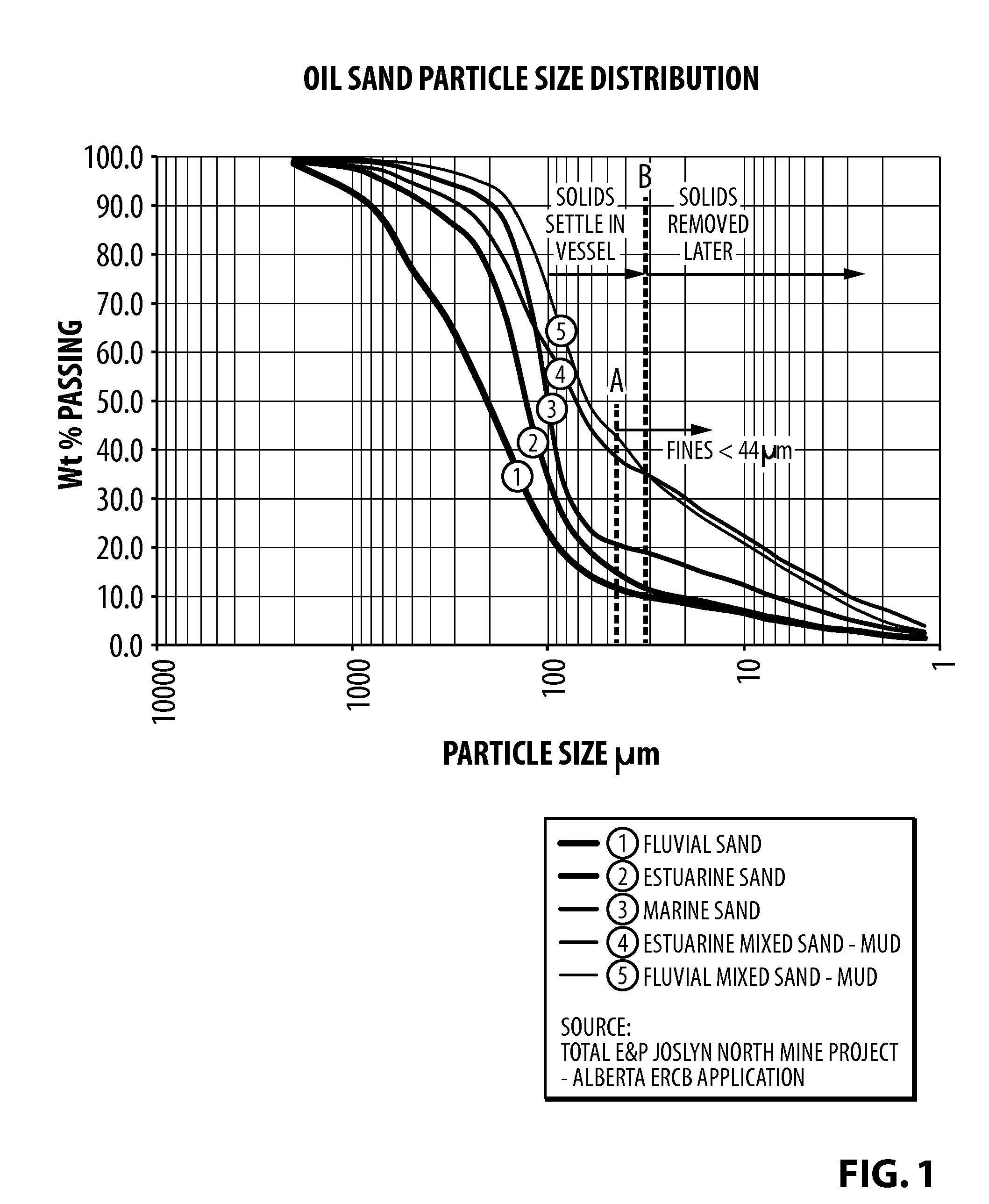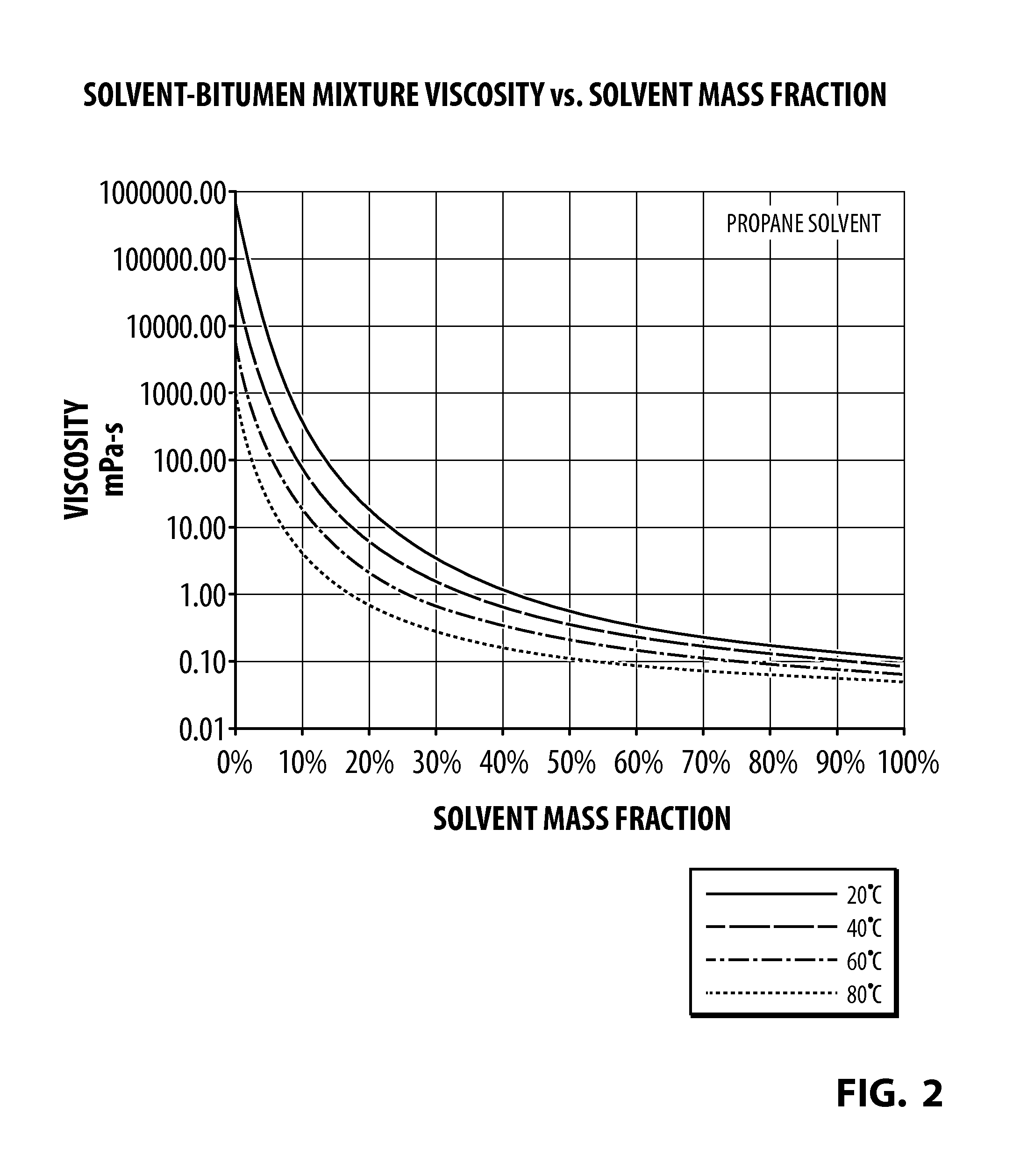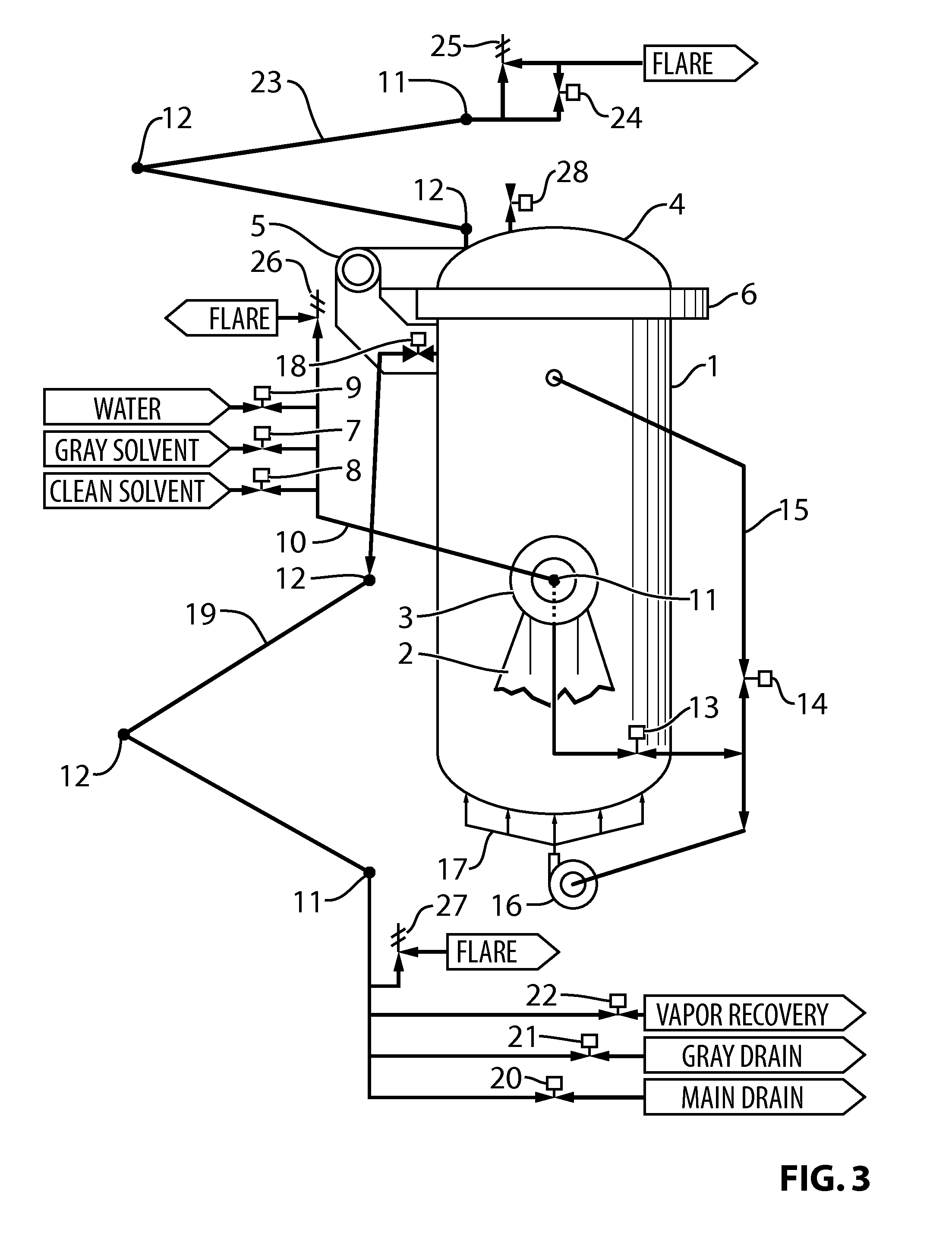Single solvent method and machine for separating bitumen from oil sand
a single solvent and oil sand technology, applied in the field of recovery of bitumen from oil sands, can solve the problems of insufficient viscosity reduction, the most difficult solids to separate from the bitumen, and the need for expensive maintenance and downtim
- Summary
- Abstract
- Description
- Claims
- Application Information
AI Technical Summary
Benefits of technology
Problems solved by technology
Method used
Image
Examples
Embodiment Construction
Mixture Viscosity and Particle Settling Time Calculations
[0054]The viscosity reduction gained by means of the use of light hydrocarbon solvents is the most important factor driving the design of this method and machine. The viscosity of the solvent-bitumen mixture is accurately calculated using Lederer's equation 1):
μmix=μSolventfs*μμBitumenfb
[0055]In equation 1), μ is dynamic viscosity, measured in milliPascal seconds, mPa-s. The dimensionless exponents for solvent and bitumen, fs and fb, sum to unity and are calculated using equation 2)
fb=α*Cvbα*Cvb+Cvs2)
[0056]In equation 2), α is an empirical constant defined in equation 3) by Shu. Cvb and Cvs are the volume fractions of bitumen and solvent in the mixture which sum to unity.
α=17.04*Δρ0.5237*ρb3.2745*ρs1.6316ln(μbμs)3)
[0057]In equation 3), ρ is the specific gravity of bitumen, b and solvent, s. Δρ is the specific gravity of bitumen less that of solvent. The dynamic viscosities of bitumen and solvent are used in the natural logari...
PUM
| Property | Measurement | Unit |
|---|---|---|
| Boiling point | aaaaa | aaaaa |
| Boiling point | aaaaa | aaaaa |
| Temperature | aaaaa | aaaaa |
Abstract
Description
Claims
Application Information
 Login to View More
Login to View More - R&D
- Intellectual Property
- Life Sciences
- Materials
- Tech Scout
- Unparalleled Data Quality
- Higher Quality Content
- 60% Fewer Hallucinations
Browse by: Latest US Patents, China's latest patents, Technical Efficacy Thesaurus, Application Domain, Technology Topic, Popular Technical Reports.
© 2025 PatSnap. All rights reserved.Legal|Privacy policy|Modern Slavery Act Transparency Statement|Sitemap|About US| Contact US: help@patsnap.com



